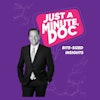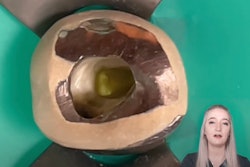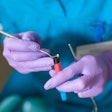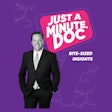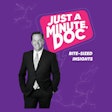This week, Dr. Meena Barsoum from CDOCS returns with another quick clinical tip to help every dentist and dental practice.
Video transcript
"Today, I'd like to talk about loose screws and using your CEREC to determine how to address a loose screw, specifically on a cement-retained abutment.
"So in our workshops, we get this question a lot: 'Which type of abutment should I be using: a screw-retained or a cement-retained?' And I know a lot of people are very, very comfortable doing a screw-retained restoration. So we talk about some of the benefits of cement-retained specifically.
"With material flexibility, for example, I'm not just limited to an e.max LT like I am with a screw retained. I can use any material for my cement-retained crown. I also prefer to use zirconia. Zirconia's a little bit more biocompatible when it comes to the tissues. And when doing cement-retained restoration, it's easy for me to deliver the restoration, because I can control my path of insertion, which leads to less prosthetic complications.
"However, there are some complications down the line that may happen. They're very rare, but sometimes they do happen, and we need to be prepared on how to take care of those when they do happen.
"Specifically for me, in the last couple of days, I had a patient come in with a loose implant crown. So we've all gotten this call. It's a very concerning call, because you don't know what it could be. Is it the cement? Is it the tie base? Is it the implant itself, or is it a loose screw? So as you can see here in this case, on this image, the patient came in. Thankfully, the bone is sound, the implant is healthy, and there's really no surgical issues going on with the implant. It just happens to be loose.
"So first thing I'm always going to look for is the screw. Now the problem with this case is it is cement retained? So how do I know where to access my crown in order to tighten the screw and torque it back down to spec? This is where having CEREC comes in really handy. I'll go back into my software.
"As you can see here, I'm going to open up the case and when I look at the case, I can see exactly where the screw opening is by looking at the occlusal surface. This gives me a bit of a map so I know where to drill my access point through his crown in order to access the screw and torque it down to spec.
"Another thing you can do is you can unsplit the case, which takes it back to a screw-retained restoration. This allows you to see exactly and precisely where that opening needs to be.
"So this is what I did: I went back to the patient; I made a small opening through the porcelain crown; I torqued the screw down to spec, filled it back in with Teflon tape and composite; and now I've converted that cement-retained restoration into a screw-retained restoration. So now it's torqued down to spec. Everything is tightened down and the restoration is saved, and there's really no major issues with the case."


